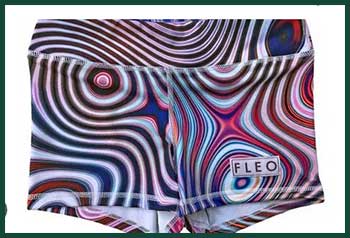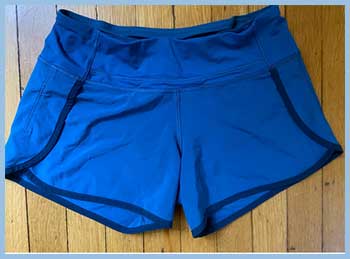Activewear has become a wardrobe staple for many, with versatile and functional pieces that take you from the gym to running errands. Two popular activewear brands, FLEO and Lululemon, have emerged as go-tos for stylish and quality gear.
But with so many similarities, how do you decide which brand is right for you? Here’s an in-depth comparison of FLEO and Lululemon to help you determine the best fit.
A Brief Comparison Table
| Feature | FLEO | Lululemon |
| Quality | Comparable technical performance and quality | Innovative patented fabrics, luxury details |
| Fit | Roomier, casual fit | Contoured, athletic fit |
| Style | Understated basics and core essentials | Trend-driven styles mixing fashion and performance |
| Pricing | Affordable, budget-friendly prices | Premium pricing, high-end |
| Sustainability | Uses majority recycled fabrics, net-zero emissions goal | Incorporates some sustainable materials but room for improvement |
| Best For | Everyday athleisure and low-key workouts | High-performance fitness and stylish athleisure |
Overview Of FLEO

Founded in 2019 by yoga instructor Christina Stembel, FLEO aims to make high-performance activewear accessible and inclusive. The direct-to-consumer brand sells leggings, shorts, tops, and more designed for all activities and body types.
Prices range from $30 for accessories to $88 for leggings. FLEO often runs sales and promotions to keep prices down.
Some key features of FLEO activewear include:
- Bounce Fabric – FLEO’s proprietary fabric blend designed for lightweight compression, sweat-wicking, and four-way stretch. The material feels cool, smooth, and bouncy.
- Sculpt Collection – Leggings and shorts designed to enhance and lift your shape through fabric panels and ruched detailing.
- Size inclusivity – FLEO offers sizes XS-3XL in all products for an inclusive range of fits. Extended sizing also available.
- Pocket-friendly – Compared to other activewear brands, FLEO aims to offer quality without the premium price tag.
- Earth-friendly – FLEO uses sustainable fabrics like recycled polyester and partners with factories using green practices.
Overview Of Lululemon

Founded in 1998, Lululemon has grown into one of the most recognizable athleisure brands. Their activewear combines technical athletic performance with streetwear style.
Prices range from $15 for accessories to $168 for leggings.
Some key features of Lululemon activewear include:
- Innovative fabrics – Lululemon uses patented fabrics like NuluTM, Luxtreme®, and SilverescentTM designed for compression, sweat-wicking, and four-way stretch.
- Flattering fits – Leggings and tops are crafted to move with you while enhancing your shape and remaining opaque.
- High quality – Lululemon invests in technical fabrics and durable construction for activewear that lasts.
- Trend-driven – Lululemon translates runway trends into functional activewear pieces. Their styles combine fashion and performance.
- Premium pricing – The innovative fabrics and quality come at a price point on the luxury end for activewear.
Comparison Between FLEO And Lululemon
Quality and Fit
When it comes to quality and fit, FLEO and Lululemon take a similar approach in crafting activewear that can keep up with your sweatiest workouts.
Both brands use proprietary fabric blends that offer four-way stretch, moisture-wicking, compression, and breathability. You’ll stay cool and comfortable whether running errands or running miles. The leggings and shorts also boast sweat-wicking and quick-drying properties to keep you feeling dry.
For opacity, Lululemon’s Luxtreme fabric and FLEO’s Bounce fabric are both designed to be squat-proof. The material is thick without feeling bulky. You won’t have to worry about embarrassing sheer spots mid-workout with either brand.
In terms of fit, sizing will be most accurate if you refer to each brand’s size charts. Lululemon offers numerical sizing from 0-20 while FLEO uses traditional XS-3XL sizing. Both brands fit close to the body without restricting movement.
FLEO may have a slightly roomier fit, while Lululemon caters to athletic builds. Order your usual activewear size for the best fit.
When comparing fabric feel, Lululemon leggings have a slicker, cooler finish that makes them ideal for sweaty workouts. FLEO leggings have a supersoft brushed interior that maintains a comfy lounge feel.
For shorts, FLEO’s Bounce material has more of a lightweight, bouncy stretch compared to Lululemon’s technical compression shorts.
Also Read: Comparison Between Shapellx And Skims Shapewear Brand.
Style and Design
Lululemon and FLEO take different approaches when it comes to activewear style.
Lululemon interpretation of current fashion trends into stylish athleisure pieces. Their leggings, shorts, and tops come in chic colors and prints that look just as good off the yoga mat.
You’ll find cropped lengths, mesh paneling, cutouts, and other trendy stylistic details. While the looks are fashion-forward, they maintain functionality for activity.
FLEO focuses more on understated, versatile basics in classic colorways like black, navy, and gray. They incorporate thoughtful design elements like tummy control waistbands, hidden pockets, and chafe-free seams to enhance comfort and wearability.
Rather than seasonal trends, FLEO sticks to core essentials that transition seamlessly into everyday wear.
For runners and gym enthusiasts wanting activewear that looks good for errands post-workout, Lululemon’s fashionable styles are appealing.
FLEO’s timeless designs better suit those wanting low-key pieces for casual everyday activities rather than high-intensity training.
Sustainability Practices
As consumers become more environmentally-conscious, sustainability has become an important factor when evaluating activewear brands. Both FLEO and Lululemon have taken steps toward more eco-friendly business practices, but FLEO leads in sustainability.
FLEO uses recycled fabrics in 72% of its activewear. The brand partners with sustainable fabric mills and factories in order to produce clothing with net-zero carbon emissions. FLEO also works with non-profit ThredUp to recycle used FLEO activewear into new products. Their clothes ship in recycled plastic mailer bags.
Lululemon has also set sustainability goals around using renewable and recycled materials. Currently, over half their products incorporate sustainable fabrics like recycled polyester. However, a larger percentage of Lululemon products contain virgin plastics than FLEO. Lululemon also lacks recycling initiatives found from FLEO.
For environmentally-conscious consumers, FLEO is the better choice currently for sustainable activewear. Lululemon still has room for improvement when it comes to reducing textile waste and carbon emissions in production.
Also Read: Comparison Between Snag Tights And Sheertex.
Pricing and Value Comparison
When it comes to prices, Lululemon activewear costs significantly more than FLEO:
- Leggings
- FLEO – $68-$88
- Lululemon – $98-$168
- Sports bras
- FLEO – $48-$58
- Lululemon – $58-$78
- Shorts
- FLEO – $54-$74
- Lululemon – $68-$128
The price difference comes down to fabrics, manufacturing, and brand reputation. Lululemon uses patented specialty fabrics that cost more to make. Their products are also largely manufactured in North America rather than overseas.
Lululemon has also established themselves as a luxury activewear brand that people will pay a premium for.
FLEO prides themselves on offering comparable quality and performance at an accessible price point. They cut costs by selling directly to consumers and manufacturing in ethical yet affordable factories.
For shoppers wanting high-end name brand activewear, Lululemon offers coveted style with price tags to match. For budget-friendly athleisure, FLEO delivers quality without the designer price markups.
Ultimately it comes down to your budget and how much you value brand reputation when choosing between the two.
Frequently Asked Questions (FAQ)
FLEO was founded in 2019 by Christina Stembel, an entrepreneur and yoga enthusiast. Stembel bootstrapped FLEO using her own savings along with investments from friends and family. She maintains 100% ownership over the company.
Yes, FLEO leggings and shorts are designed to be fully squat-proof. Their proprietary Bounce Fabric is opaque enough to avoid showing any undergarments, even during demanding squat movements. FLEO tests all their activewear through extensive wear testing to ensure squat-proof comfort and coverage.
FLEO Bounce Fabric is a high-stretch, quick-dry fabric blend created exclusively for FLEO activewear. It contains spandex for four-way stretch and nylon for breathable sweat-wicking. The fabric feels smooth, lightweight, and cool against the skin with a barely-there compression fit. FLEO Bounce Fabric also has a natural bounce back that retains its shape wear after wear.
FLEO shorts run true to size as long as you refer to their size chart. They have a mid-rise fit designed to feel supportive without digging in. The waistbands are wide and designed to stay in place while still allowing a full range of motion. For the best fit, order your typical activewear short size. FLEO also offers free returns if the sizing doesn’t work out.
Also Read: Comparison Between Fabletics And Ten Thousand Athleisure Brands.
The Verdict
When comparing FLEO and Lululemon, there’s no definitive winner. Lululemon triumphs when it comes to trend-driven style and premium performance fabrics. But FLEO holds its own as an affordable, sustainable alternative tailored to everyday activewear.
Lululemon is unmatched in terms of coveted styles that seamlessly combine fashion and function. For trendy, luxurious-feeling activewear, Lulu can’t be beaten. However, the premium quality comes at designer price points.
For shoppers wanting similar quality and technical performance at a friendlier price point, FLEO delivers. FLEO activewear compares to Lululemon in terms of comfort, stretch, sweat-wicking and lasting power.
Their timeless designs work for lower-key activities and all-day wear. FLEO also edges out Lulu in sustainability efforts.
Ultimately the “better” brand comes down to personal preferences around budget, style and values. Lululemon wins for trendiness while FLEO takes points for affordability and eco-conscious production. For quality activewear that fits seamlessly into your wardrobe, either brand makes an excellent choice.
